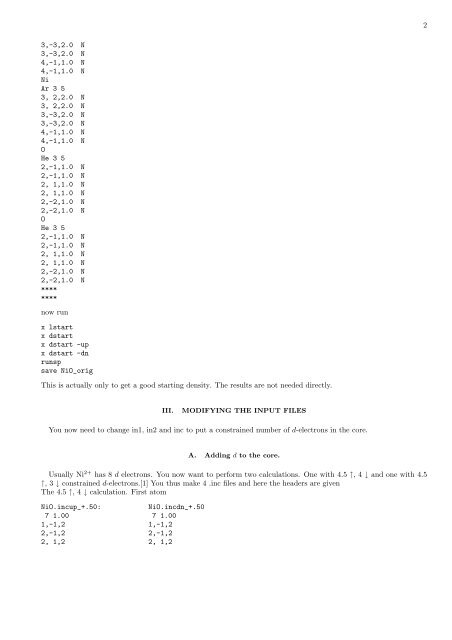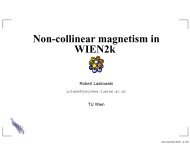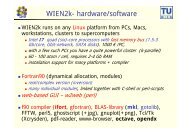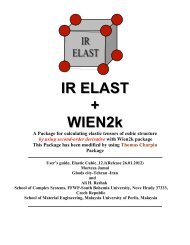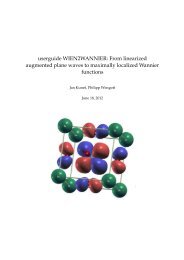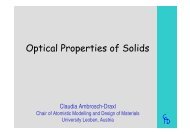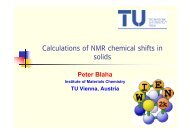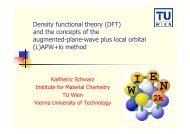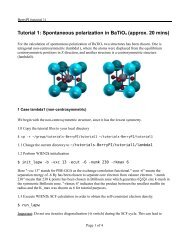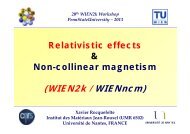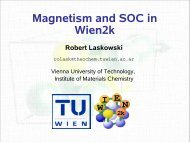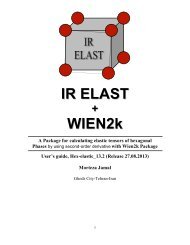Calculating the effective U in APW methods. NiO - WIEN 2k
Calculating the effective U in APW methods. NiO - WIEN 2k
Calculating the effective U in APW methods. NiO - WIEN 2k
Create successful ePaper yourself
Turn your PDF publications into a flip-book with our unique Google optimized e-Paper software.
23,-3,2.0 N3,-3,2.0 N4,-1,1.0 N4,-1,1.0 NNiAr 3 53, 2,2.0 N3, 2,2.0 N3,-3,2.0 N3,-3,2.0 N4,-1,1.0 N4,-1,1.0 NOHe 3 52,-1,1.0 N2,-1,1.0 N2, 1,1.0 N2, 1,1.0 N2,-2,1.0 N2,-2,1.0 NOHe 3 52,-1,1.0 N2,-1,1.0 N2, 1,1.0 N2, 1,1.0 N2,-2,1.0 N2,-2,1.0 N********now runx lstartx dstartx dstart -upx dstart -dnrunspsave <strong>NiO</strong>_origThis is actually only to get a good start<strong>in</strong>g density. The results are not needed directly.III.MODIFYING THE INPUT FILESYou now need to change <strong>in</strong>1, <strong>in</strong>2 and <strong>in</strong>c to put a constra<strong>in</strong>ed number of d-electrons <strong>in</strong> <strong>the</strong> core.A. Add<strong>in</strong>g d to <strong>the</strong> core.Usually Ni 2+ has 8 d electrons. You now want to perform two calculations. One with 4.5 ↑, 4 ↓ and one with 4.5↑, 3 ↓ constra<strong>in</strong>ed d-electrons.[1] You thus make 4 .<strong>in</strong>c files and here <strong>the</strong> headers are givenThe 4.5 ↑, 4 ↓ calculation. First atom<strong>NiO</strong>.<strong>in</strong>cup_+.50: <strong>NiO</strong>.<strong>in</strong>cdn_+.507 1.00 7 1.001,-1,2 1,-1,22,-1,2 2,-1,22, 1,2 2, 1,2


